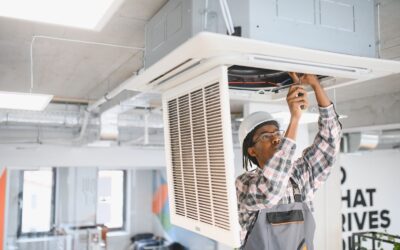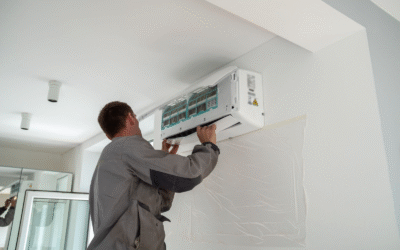The Difference Between Residential and Commercial AC Installation
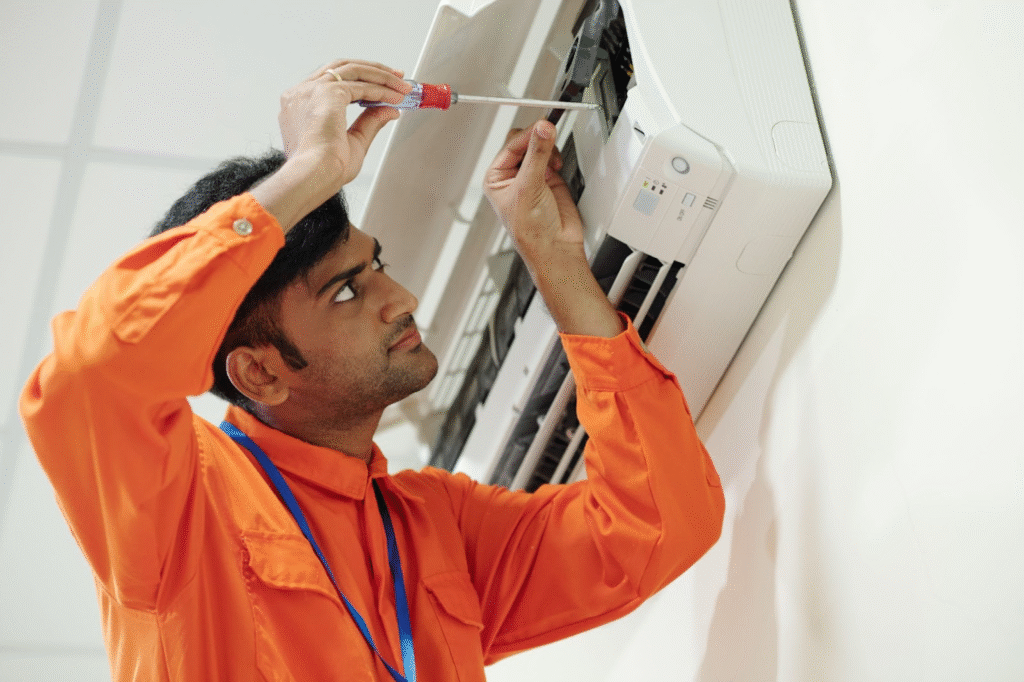
Choosing the right air conditioning system depends on more than square footage. It also involves building usage, design complexity, and compliance with codes. Though residential and commercial systems cool indoor spaces, their installation and operation vary greatly. Property owners need to understand these core differences before making any HVAC investment.
Residential vs. Commercial AC Installation Scope
Residential and commercial AC systems serve different purposes and operate under separate requirements. Home systems focus on comfort for a limited number of occupants. Commercial systems support broader cooling zones, extended operating hours, and fluctuating demand. This contrast drives installation decisions that directly affect performance and operating costs.
Usage Needs Vary by Building Type and Purpose
Residential AC systems are for family use and steady routines. These systems cool a limited number of rooms, often in single-story or multi-level homes. Commercial AC, however, must serve spaces with dynamic occupancy. These include offices, warehouses, restaurants, and retail environments. Commercial needs include variable temperature control, high ventilation, and frequent equipment use. As a result, installation strategies differ sharply between the two.
AC Unit Size and Output Requirements
Residential units are sized for smaller square footage and typically use 1.5 to 5-ton systems. Their cooling load stays consistent throughout the day. In contrast, commercial units must cool broad, multi-zone areas. They often rely on larger rooftop units or multi-unit systems. The output is based on heat load, occupancy, and lighting demands. This complexity affects unit sizing and installation planning.
System Design and AC Installation Configuration
Residential and commercial systems also differ in their structure and the components they utilize. Design choices influence ease of use, energy efficiency, and future scalability. These decisions are made during AC installation and are often locked in for the system’s lifetime.
Residential Systems Are Compact and Simpler
A residential HVAC setup typically includes a central split system or ductless mini-split. These are straightforward to install and maintain. Most homes require only one thermostat and single-zone control. In contrast, commercial buildings demand multi-zone flexibility. They use packaged units, chillers, or VRF (Variable Refrigerant Flow) systems. The more advanced the building needs, the more customized the system design must be.
Zoning Control is Essential in Commercial Spaces
Zoning refers to the division of a building into different temperature zones. Homes may not require it unless they’re large properties. Commercial buildings depend on zoning to serve areas with varying cooling needs. For example, conference rooms, kitchens, and lobbies require separate temperature settings. These setups use multiple thermostats, variable air volume (VAV) systems, and integrated controls. The zoning system also connects to the building’s energy management system.
Airflow and Ducting Design Must Match Usage
Ducting design impacts air distribution and comfort. Residential ducts are usually small and run through attics or crawlspaces. In commercial settings, ductwork is larger and more complex. It must account for long distances, high ceilings, and multiple zones. Poor airflow design can cause hot spots or energy waste. Professional HVAC services must size and position ducts to maintain balanced air delivery.
AC Installation Logistics for Homes vs. Commercial Sites
The process of installing an AC system depends heavily on the building type. Commercial installations require deeper coordination, more time, and specialized labor. Residential projects tend to be faster, with fewer compliance requirements and fewer access challenges.
Residential AC Installation Requires Minimal Prep
Home installations can be completed within one to two days. Installers assess the building load, confirm power availability, and mount the equipment. The process is streamlined and doesn’t usually involve structural changes. In most cases, permits are simple to obtain. Only one crew is needed to handle the entire process, making residential AC installation quick and efficient.
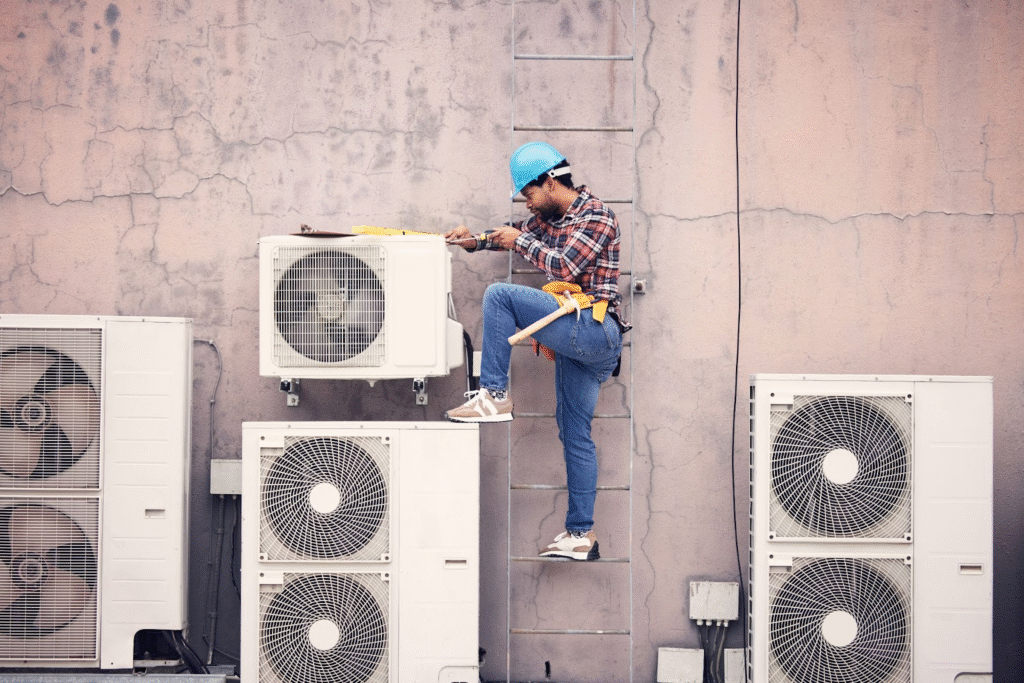
Commercial Projects Demand Coordinated Planning
Commercial HVAC installs often require collaboration between multiple trades. Engineers, architects, and code officials all have input. Installation might take place in phases to avoid disrupting business operations. Accessing rooftops or mechanical rooms requires safety planning. Equipment may need cranes or scaffolding. Due to zoning, usage, and fire code reviews, permits also take longer.
Safety and Access Are Key Concerns
In homes, safety risks are limited to electrical work and refrigerant handling. Installers follow basic lockout procedures and use ladders or access points in the attic. In contrast, commercial projects follow OSHA safety protocols. Fall protection, hazard communication, and PPE are standard. Equipment access also varies. Some buildings may require after-hours work or coordination with the elevator.
Installation Costs and AC System Efficiency
Costs are another significant difference between residential and commercial AC installation. The initial price and long-term operating expenses vary based on system size, features, and usage intensity. Installation logistics, building layout, and energy goals also influence total investment.
Residential AC Installation Costs Vary Widely
Installing a residential AC system typically costs between $4,000 and $12,000. The price depends on system size, SEER (Seasonal Energy Efficiency Ratio) rating, and the home’s layout. Residential units usually operate on single-phase power. These setups involve fewer zoning needs and less hardware overall. Maintenance plans are affordable and generally straightforward. These cost ranges are estimates only, subject to market fluctuations, and not tied to any specific product provider.
Commercial Installations Require a Larger Budget
Commercial AC systems are considerably more expensive due to their complexity, size, and code requirements. Installation costs typically range from $25,000 to over $100,000, depending on the type of building and system specifications. These setups often need three-phase power, enhanced structural support, and electrical upgrades. Additional expenses may include smart controls, zoning integration, and custom ductwork. Long-term energy savings and system scalability offset the higher upfront investment. These pricing figures are general industry estimates; actual costs will vary based on location, project scope, and product selection.
Energy Efficiency Impacts Long-Term Savings
Efficient systems save on utility bills year-round. Residential systems rely on programmable thermostats and efficient compressors. Commercial systems use economizers, variable-speed fans, and advanced controls. They also include energy tracking and intelligent monitoring. Proper installation and calibration can reduce peak energy use. Over time, these savings outweigh the initial installation cost.
Maintenance After AC Installation
Post-installation care ensures longevity and performance. Maintenance routines vary by system type and usage patterns. A home may only need annual service, while commercial properties require more frequent attention.
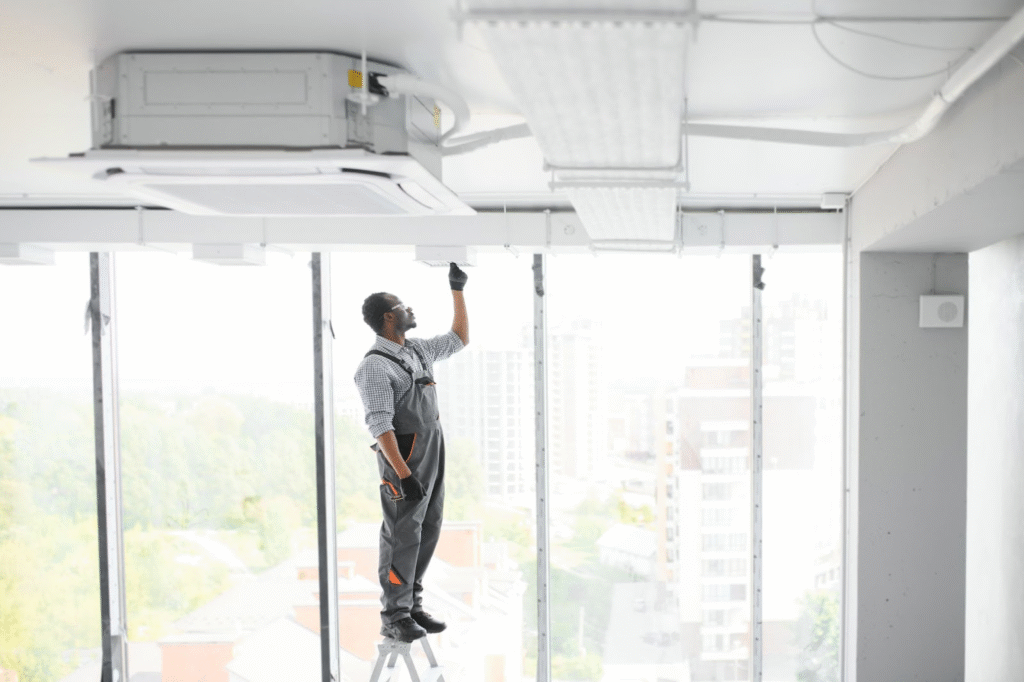
Home AC Systems Need Basic Seasonal Service
Most homeowners schedule air conditioning services in spring or fall. These services include cleaning coils, checking refrigerant levels, and replacing filters. The goal is to keep the system efficient and avoid breakdowns. Some plans include thermostat calibration and duct inspection. Maintenance is low-cost and straightforward, keeping comfort consistent year-round.
Commercial Systems Require Ongoing Monitoring
Commercial AC maintenance is more involved. Service visits may be scheduled monthly, quarterly, or seasonally. Technicians inspect sensors, test controls, and clean system components. Remote diagnostics and predictive analytics help prevent downtime. Many businesses use service contracts for compliance and reliability. Any interruption in cooling can disrupt workflow or damage sensitive equipment.
Skilled Technicians Are Critical for Complex Systems
General HVAC technicians can service residential units. These professionals are licensed and trained in most home systems. Commercial units, however, require technicians with experience in high-capacity, multi-zone systems. They must understand complex wiring, refrigerant handling, and integrated building controls. Errors during service can void warranties or result in costly breakdowns. Hiring trained experts ensures the system runs safely and efficiently.
AC Installation Code and Environmental Rules
Every AC system must follow local building codes and environmental laws, which vary between residential and commercial installations. Noncompliance can result in fines, equipment removal, or future installation delays.
Permits and Code Standards
Residential permits focus on safety, noise limits, and setback rules. Local inspections check refrigerant handling, wiring, and airflow. Commercial permits cover zoning, occupancy, air quality, and energy codes. Each jurisdiction has unique requirements for system design and ventilation. Documentation must be submitted before and after installation. Getting permits right prevents delays and liability.
Environmental Laws
Modern AC systems must follow EPA rules on refrigerant types. Homes typically use R-410A, but commercial sites may switch to low-GWP alternatives. Installers must handle refrigerants responsibly and log all usage. Equipment disposal also follows federal and state environmental guidelines. Older systems with banned refrigerants must be replaced or retrofitted. Staying compliant protects both the environment and your investment.
How to Choose the Right AC Installation Contractor
Your contractor’s experience determines the smoothness of the process. Not every HVAC company handles both commercial and residential work. The right choice should match your building type, budget, and performance needs.
Look for Relevant Project Experience
A residential contractor should have solid references and local project experience. They must understand home layouts, comfort preferences, and energy savings. Commercial contractors need a broader skillset. They work with engineers, control systems, and large-scale logistics. Ask for completed project examples similar to yours. Verify their licenses and check insurance coverage before signing a contract.
Ask the Right Questions Before Hiring
Start by asking what systems they install and whether they handle permits. Check if they offer maintenance plans and after-installation support. Ask how long the project will take and who will be on-site. Make sure they provide a load calculation, not just an equipment quote. Clarify whether they offer warranty services. A good contractor will provide options and explain the best fit for you.
Match the Right AC Installation System to Your Property
Installing the wrong AC system costs more than money. It can lead to inconsistent cooling, higher utility bills, and early system failure. Residential and commercial installations follow different rules, and cutting corners usually backfires. Whether you’re managing a rental home or running a large office, the system must be tailored to the space. The sooner you align your AC system with your needs, the smoother the results.
Want practical answers, not just product specs? The Cooling & Heating Repair blog offers expert-backed HVAC insights that actually help.
Categories
- AC installation
- AC Installer
- AC Repair
- AC Repair/Heater Repair
- AC System Maintenance
- Air Conditioning Repair
- Air Conditioning Services
- Appliance Repair
- Furnace Repair
- Heater Repair
- Heater Repair Services
- Heating Services
- HVAC
- HVAC and Appliance Repair Services
- HVAC Installation
- HVAC Services
- Promotion
- Thermostat installation
- Uncategorized
